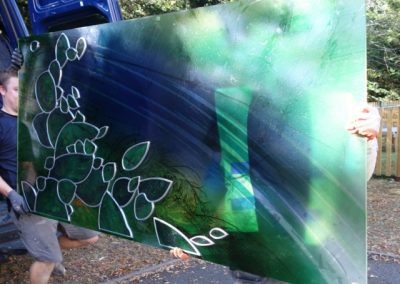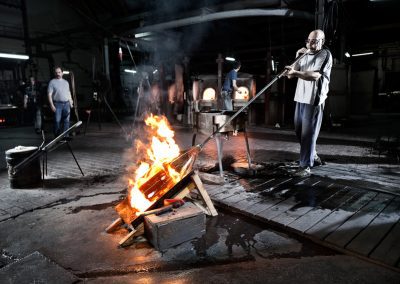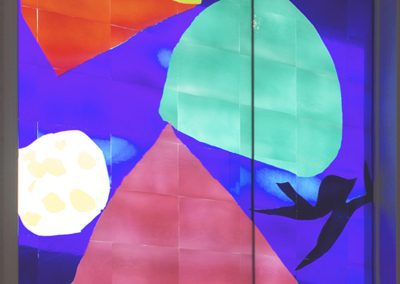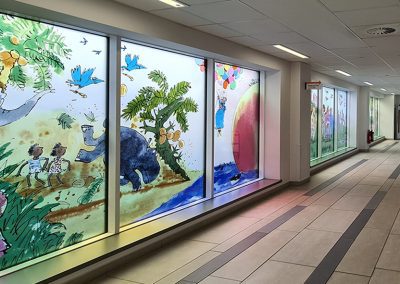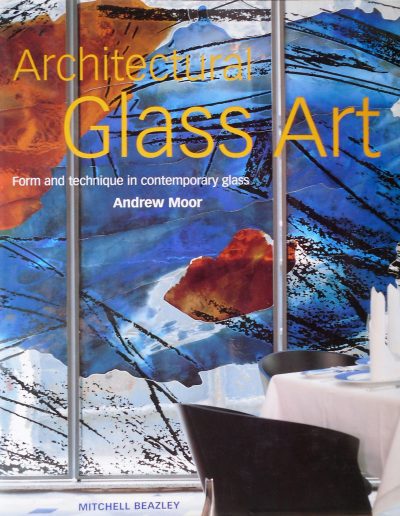Stained glass artists have for centuries mastered the art of creating statement pieces that fill rooms with beautiful light, but what makes stained glass so unique?
There are various views on this. Some people feel that the term ‘stained glass’ should be used specifically to refer to those projects which employ the medieval practice of cutting up mouth-blown glass and bonding it together using lead came. This, they maintain is ‘real’ stained glass. There is an implication here that those practices which do not use this ancient technology are somehow not quite the real thing and so are somehow cheap modern replicas of the genuine practice of ‘stained glass.’
I have a slightly different view. It seems to be that any artistic practice that uses stained glass can be described as ‘stained glass’. So, when we use screen-printed or air-brushed vitreous enamels fired into a base glass – then this is truly stained glass. The use of lead or not is not strictly relevant.
So there are various definitions of ‘stained glass’. There is ‘bonded antique glass’. This is well described in the chapter “Transcending Lead” from my book ‘Architectural Glass Art’ (2010). At this time, this was a relatively new technique, and it was termed ‘Laminated Antique’. Genuine mouthblown ‘antique glass’ is laminated to larger sheets of float glass, or, as in the example shown below (Wimbledon Synagogue by Graham Jones) leaded antique glass is bonded to float glass. The artists exploiting these techniques are unquestionably stained glass artists.
‘Transparent Vitreous Enamels’ remain quite a specialist technique. Many industrial companies use opaque enamels for all sorts of processing of coloured glass, but it tends to be only glass art specialists who work with transparent enamels. The enamels are fired into the glass. When painted they look dead. But, once fired, they transform themselves into beautiful, animated colours. This surely is ’stained glass’. The glass has been stained and once fired, the beauty of the colour emerges.
At the risk of promoting my own books, these processes and distinctions in technique are best illustrated in my second two books – Architectural Glass Art and Colours of Architecture. The latter is mostly involved with vitreous enamels on float glass.


